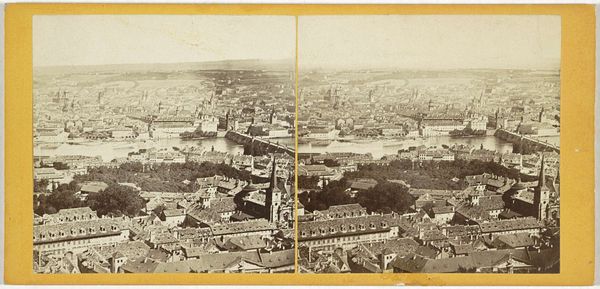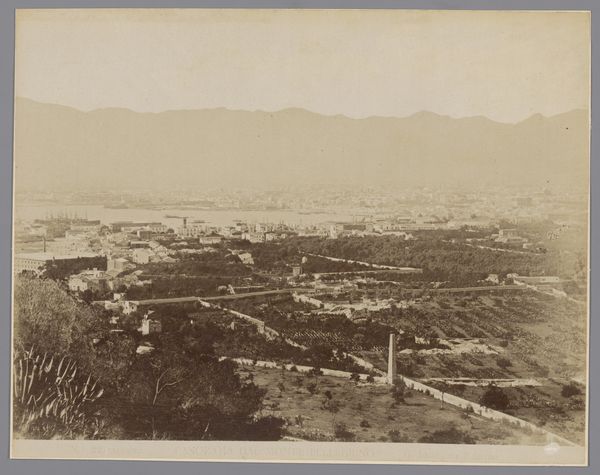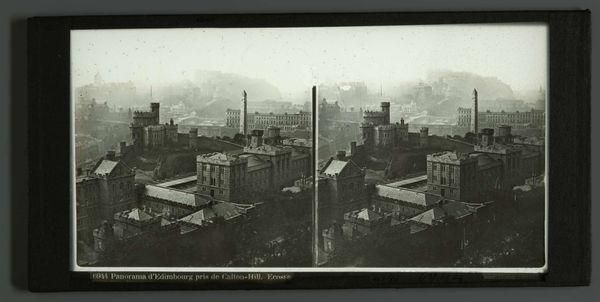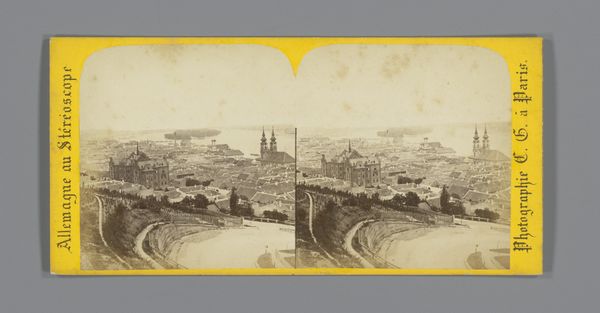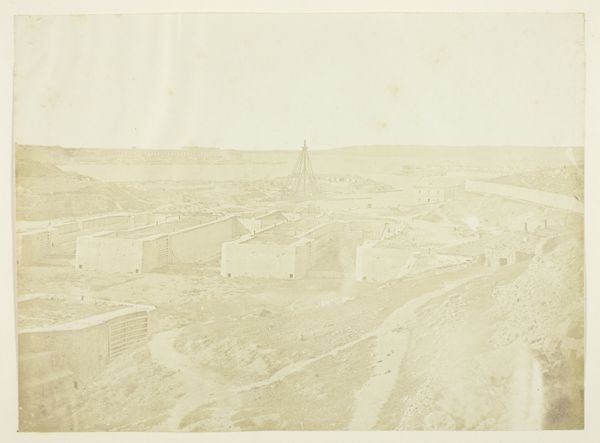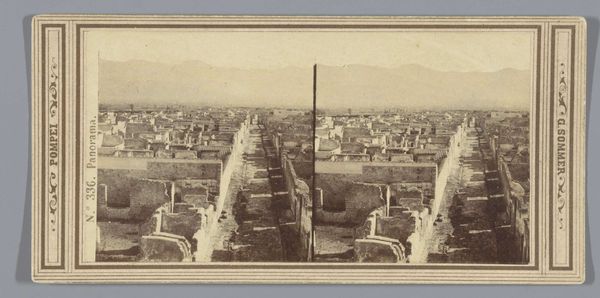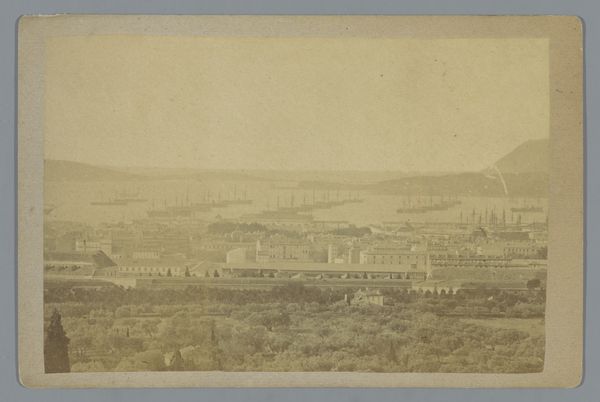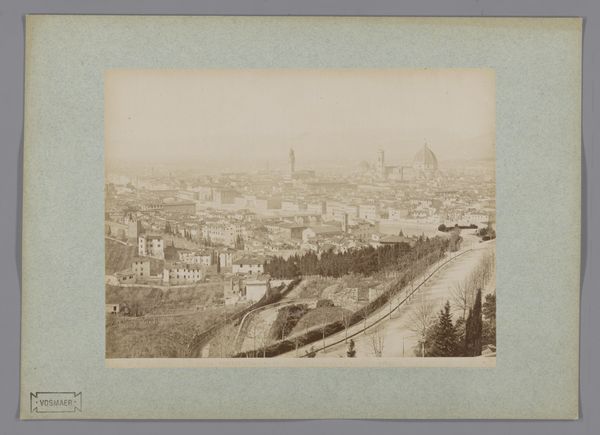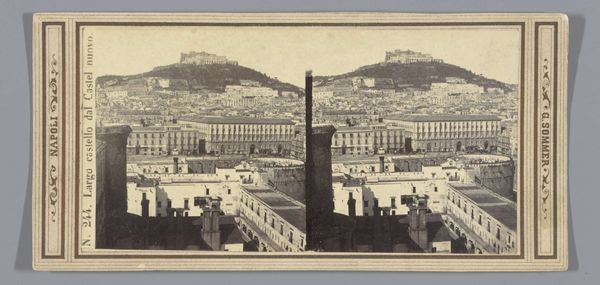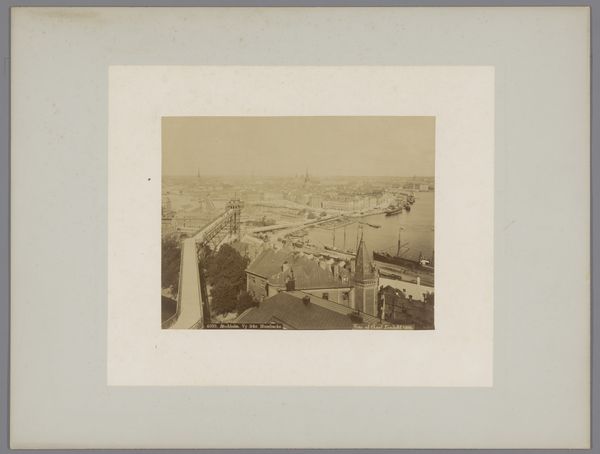
photography, albumen-print
#
water colours
#
landscape
#
photography
#
coloured pencil
#
cityscape
#
italian-renaissance
#
albumen-print
Dimensions: height 85 mm, width 170 mm
Copyright: Rijks Museum: Open Domain
Curator: Here we have Giacomo Brogi's "View of Florence from Bellosguardo," an albumen print from sometime between 1860 and 1890. It’s a cityscape, presenting a panoramic vista of Florence. Editor: My first impression is how strikingly faded it is, almost like a ghost of a memory. And that rather imposing post right in the center dividing the stereoscopic images gives me an odd sense of separation and maybe something akin to alienation. Curator: That post you see bisecting the image is actually inherent in stereoscopic photographs. When viewed with a special device, the photograph appears three-dimensional! Editor: Fascinating. Viewing Florence through this mediated gaze, then. I think about how this photo encapsulates the Italian Renaissance, that rebirth of classical knowledge. You have this concentration of cultural heritage—architecture, artistic tradition—laid out for consumption, almost a visual assertion of power, of Western cultural dominance. Who was this image *for*? Curator: Perhaps for the burgeoning tourist industry, but also as a sort of symbolic mapping of the Florentine identity, and continuity. Brogi, and others who captured views of Florence at this time, reinforced certain established ways of seeing, which inevitably connects to shared ideas, values, and stories within Florentine, and Italian, culture more broadly. Note how the architectural details—the Duomo, the Palazzo Vecchio—are accentuated, becoming icons in the cityscape. Editor: It makes me consider the people omitted from the frame, the disenfranchised communities not represented in this 'rebirth'. This panorama offers a picturesque scene but what labor constructed this scene? Whose stories are excluded to make way for this particular representation? I wonder what it might mean to disrupt it? Curator: Those are critical questions to raise. Thinking about its status as an albumen print also connects it to discourses around permanence and historical record. The albumen print itself was so widespread at the time as a means of visually preserving time and place and Brogi here aligns Florence with ideals of classical beauty and cultural heritage. But beyond being a historical artifact of 19th-century Italy, do you see potential to glean something relevant about our own society’s relationship with our urban environments and history? Editor: Absolutely. It invites us to be aware of the complex stories interwoven into these views. It underscores the role of images in shaping collective narratives. It encourages a deconstruction and re-evaluation. Curator: Well, I believe our encounter here illuminates not just Brogi’s work, but also offers a platform to interrogate inherited histories. Editor: Agreed. May this spark further dialogue on these critical perspectives.
Comments
No comments
Be the first to comment and join the conversation on the ultimate creative platform.

